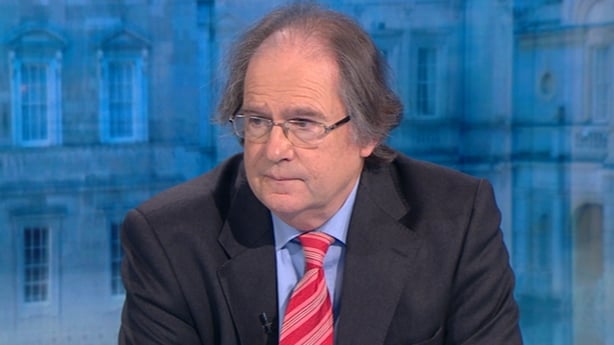A year on from the 2016 General Election and election talk has been in the air again all week, so it is timely to see what the polls are telling us about support for the parties, writes Michael Marsh, Emeritus Professor, Trinity College Dublin.
We have had more than 20 polls from the main companies, most of them either from RED C and Behaviour and Attitudes, with three from IPSOS MRBI and two from Millward Brown.
Of course, we can look just at the most recent poll, but with the reality of sampling error and events having a very short-term impact it is more sensible to take a longer view.
What I have done here is to look at the polls since the start of 2015, which includes the run up to the last election, and the 12 months since that vote.
I have shown the trends for four parties - Fine Gael, Fianna Fáil, Sinn Féin and Labour - and for the very diverse group of Others.
I have also shown the Fianna Fáil lead over Fine Gael. The graphs show each poll, a trend line and the level of support won by that party or grouping at the last election.
We can start with the main government party, Fine Gael.
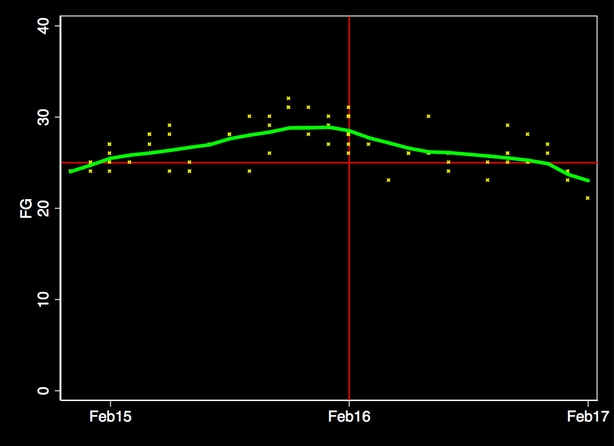
Its support looked as if it was rising in 2015, but it fell throughout 2016, and in the last three polls support lies below the vote the party secured at the election.
There has been quite a lot of variation, with a range of almost 10%, but the long-term trend is downwards, even without the last B&A poll that put FG at just 21%.
In contrast, Fianna Fáil has been trending upwards over the last year and almost all of the polls published since February 2016 have put FF above the 24% of the vote it won then.
Actually being in government seems to have done Fine Gael no favours, but propping up that same government seems to have paid off for FF.
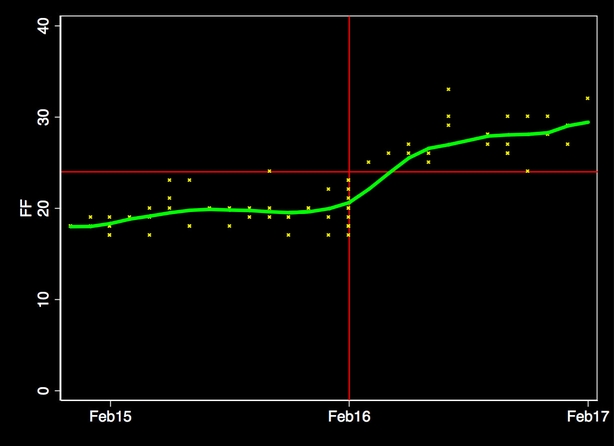
Power without responsibility seems to be a rewarding combination when the agenda is so full of problems and solutions are so far away.
Looking at the gap between the two largest parties the trend is even more striking. Fine Gael led handily though 2015, but Fianna Fáil overtook it soon after the election and have pulled away since.
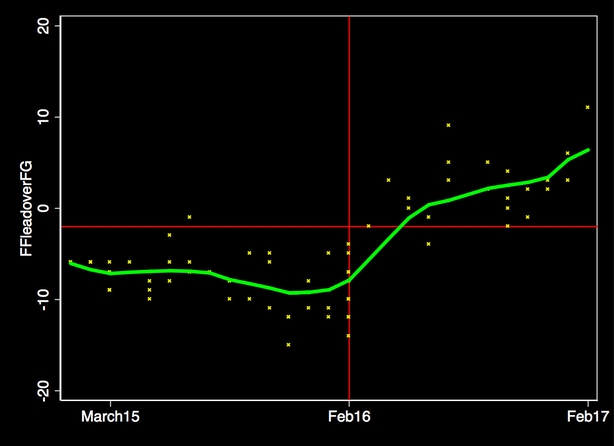
Sinn Féin was sliding downwards slowly though 2015 and its support has been pretty flat since the election, although it has consistently polled above the 14% it won.
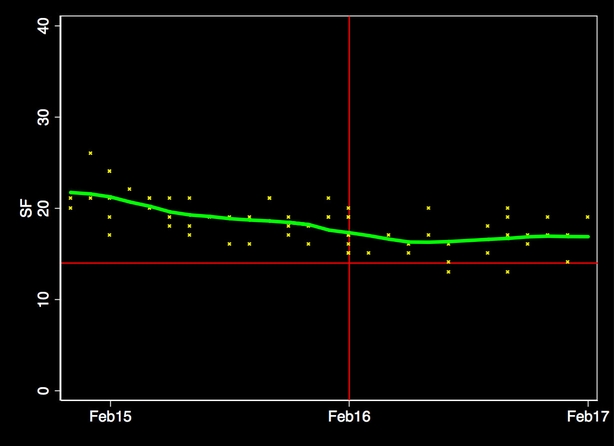
Labour's vote is also flat enough.
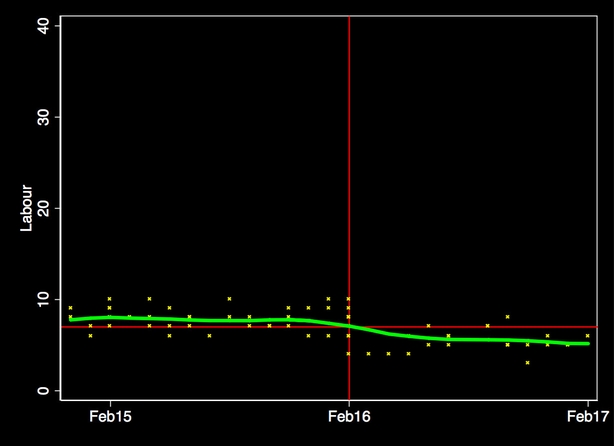
Support for 'Others' also looks quite flat, and if anything is trending downwards.
However, Others show more variability than other groupings: the range is huge, from 17 to 31 in closely spaced surveys.
The smaller parties are not always identified in some polls but where there are data they show little trend in support for the Independent Alliance and the AAA/PBP, both of which are polling close to their support at the last election.
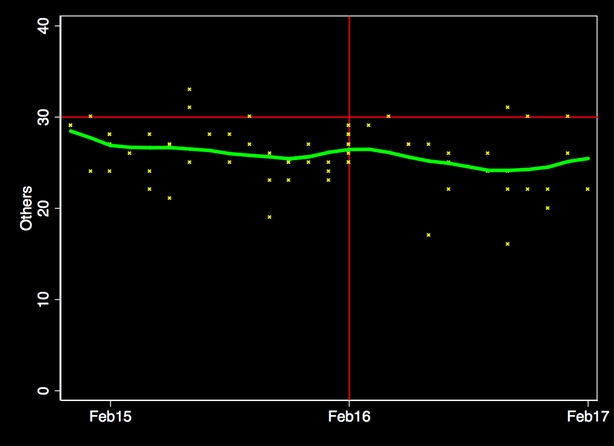
It is important to notice that the polling trend lines do not coincide exactly with the election outcomes.
Fine Gael and Sinn Féin won fewer votes that promised by most pre-election polls while Fianna Fáil and Others won more. This could be because of 'late swing' as the final campaign helped some and hurt others, but also because of more systematic errors in the polls.
There are significant methodological differences between the different polling companies in terms of how they contact respondents, how they conduct interviews, the ordering of questions, the weighting of the sample to try to ensure it is representative and, not least, whether or not allowance is made for the many people who will not actually vote.
The average figures for each party across each poll, even allowing for timing, do vary somewhat. Most of these differences are small, particularly those between RED C and B&A, who have conducted most of the polls published since the election, but MRBI and MB did tend to give Others lower support and to estimate higher support for SF, the latter perhaps because neither included controls for turnout.
The same companies also tended to estimate support for Fianna Fáil a little higher.
These differences will not necessarily continue through 2016 and onwards but it is one more reason to focus on these trends as much as on the levels. If we look just at trends since the election, the landscape is generally even flatter.
Fine Gael's decline and Fianna Fáil's rise is more distinctive when viewed against 2015, as does the decline of Sinn Féin and Others.
All in all the only grouping to find much to cheer about in these pictures is Fianna Fáil.
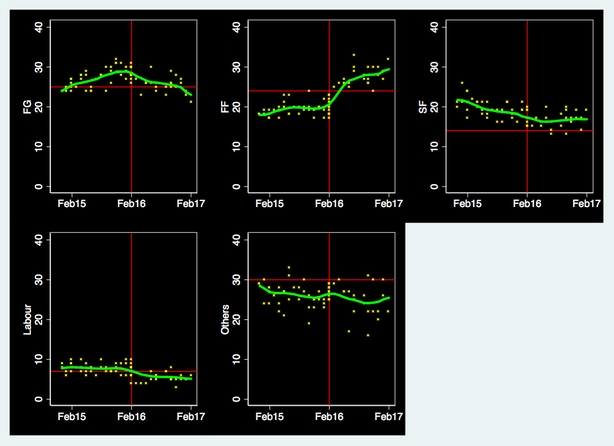
Underestimated, apparently, going into the last election, it now promises to do a lot better again next time, and would be odds-on to become the largest party, with a bigger seat advantage over Fine Gael than Fine Gael now holds over it.
There will probably be a few more polls as the race to succeed Enda Kenny hots up in Fine Gael.
A new leader often gives the party a boost, but the problem is maintaining that over a longer term.
Whoever takes over, and whenever it happens, the bigger picture is that combined FF/FG support is still not much over 50%, even though some polls have suggested it could be closer to 60%.
Whenever an election comes, unless we see a real FF/FG coalition, the days of our 'new politics' look to last for some time yet.
Note: These figures do not take into account the latest Sunday Independent / Kantar Millward Brown opinion poll.
By Michael Marsh, Emeritus Professor, Trinity College Dublin
